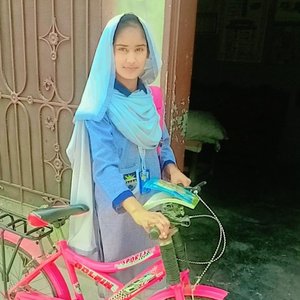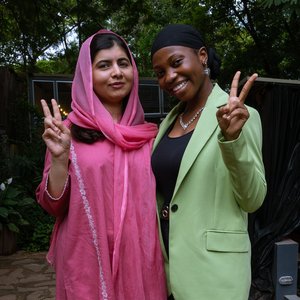We are not just machines of reproduction: ecofeminism in India and its importance for girl activists
Photo courtesy of Guncha Shandilya
19-year-old Guncha reflects on the first time she learned about ecofeminism, a term referring to the relationship between woman and nature and the shared history of oppression. She writes about the legacy of ecofeminism in India and why the history is important for girl activists.
It was during a group discussion that I first heard the revolutionary concept of eco-feminism. But it remained a mystery to me until later, in my ecology and literature course. I remember studying the relationship between nature writing and ecology and how the environment is important to us in many aspects. I read feminist authors like Vandana Shiva, Geetanjali Shree and Mahasweta Devi and their perspectives. I learned about eco-critical cultural practices, or how some cultural practices badly impact the environment.
Learning about the relationship between cultural practices and our environment helped me dive deeper into eco-feminism. I began viewing feminism and environmentalism — and their relationship — in a different light.
Ecofeminism is how ecological and feminist aspects are intertwined perfectly. It is the deep connection women and nature share; it also addresses the parallels between the oppression and subjugation of both women and nature.
The term ecofeminism was coined by French feminist Françoise d’Eaubonne in 1974. It is an instrumental field of study because of its bold and raw approach to how unapologetically it stands for both women and nature and strives to stop the abuse of both. It also highlights how cultural and social norms inflict irreversible harm to women, nature and their agency. Examples include genital mutilation, female infanticide for women, slash-and-burn agriculture causing pollution, cutting old and healthy trees for worship, damming rivers causing floods and ecological imbalance.
Ecofeminism teaches us that women and nature are viewed similarly under patriarchal systems, leading them to spearhead environmental movements with great vigour.
But eco-feminism is not a new concept. Indigenous groups such as the Bishnois in India have always been close to nature, respecting it for what it provides and spearheading movements to restore it.
“Vandana Shiva encapsulates the beauty and power of women leading environmental movements in her quote: “We are either going to have a future where women lead the way to make peace with the Earth or we are not going to have a human future at all.””
The famous “Chipko movement” led by rural women with the support of local environmentalist, Sunderlal Bahuguna, was known for its unique form of protest — clinging to trees.
Bachni and Gaura Devi led the 1970s movement that revolved around hugging trees in Uttarakhand, India. They prevented trees from being cut down by hugging them until loggers left. This sparked a lot of awareness and protest in local regions too. It was one of the most prolific ecofeminist movements in rural India.
The Khejarli movement in Rajasthan had a similar goal. Villagers took away wood-cutting equipment from the government that was building commercial systems in the state. In 1987, seed collector and farmer Vandana Shiva established the revolutionary Navdanya, or “nine crop” movement for food sovereignty. This particular movement signalled the importance of food security and cultural biodiversity in India.
Vandana Shiva encapsulates the beauty and power of women leading environmental movements in her quote: “We are either going to have a future where women lead the way to make peace with the Earth or we are not going to have a human future at all.”
“No one can understand the sacrifices, longings and struggles of a mother better than women themselves. One way to do this is by putting women in positions where they can uphold women’s rights and implement environmental protections. ”
It’s necessary to prevent any harm to Mother Nature — she’s also a mother. No one can understand the sacrifices, longings and struggles of a mother better than women themselves. One way to do this is by putting women in positions where they can uphold women’s rights and implement environmental protections.
In countries like Brazil, women are doing just that. Indigenous women are working to protect the natural biodiversity and the Amazon rainforests. Vanda Witoto, an activist and teacher in Manaus, carrying out this work. “We learn about who we are, our mother tongue, how to care for the environment and keep our culture more and more alive,” she shared on Instagram.
Witoto’s cause extends far beyond this. She is also fighting for better access to education and political participation in Amazonian communities like hers.
From India to Brazil — past and present — women have been leading environmental movements. It’s important to acknowledge the rich and long history between women and the environment and how our fates are intertwined.
We need not only think about how far we’ve come but also acknowledge that more needs to be done in terms of empowering, respecting, and protecting women — and their agency, hopes, and dreams — in their fullness. We, like nature, are not just machines of reproduction.
 Read more
Read more












